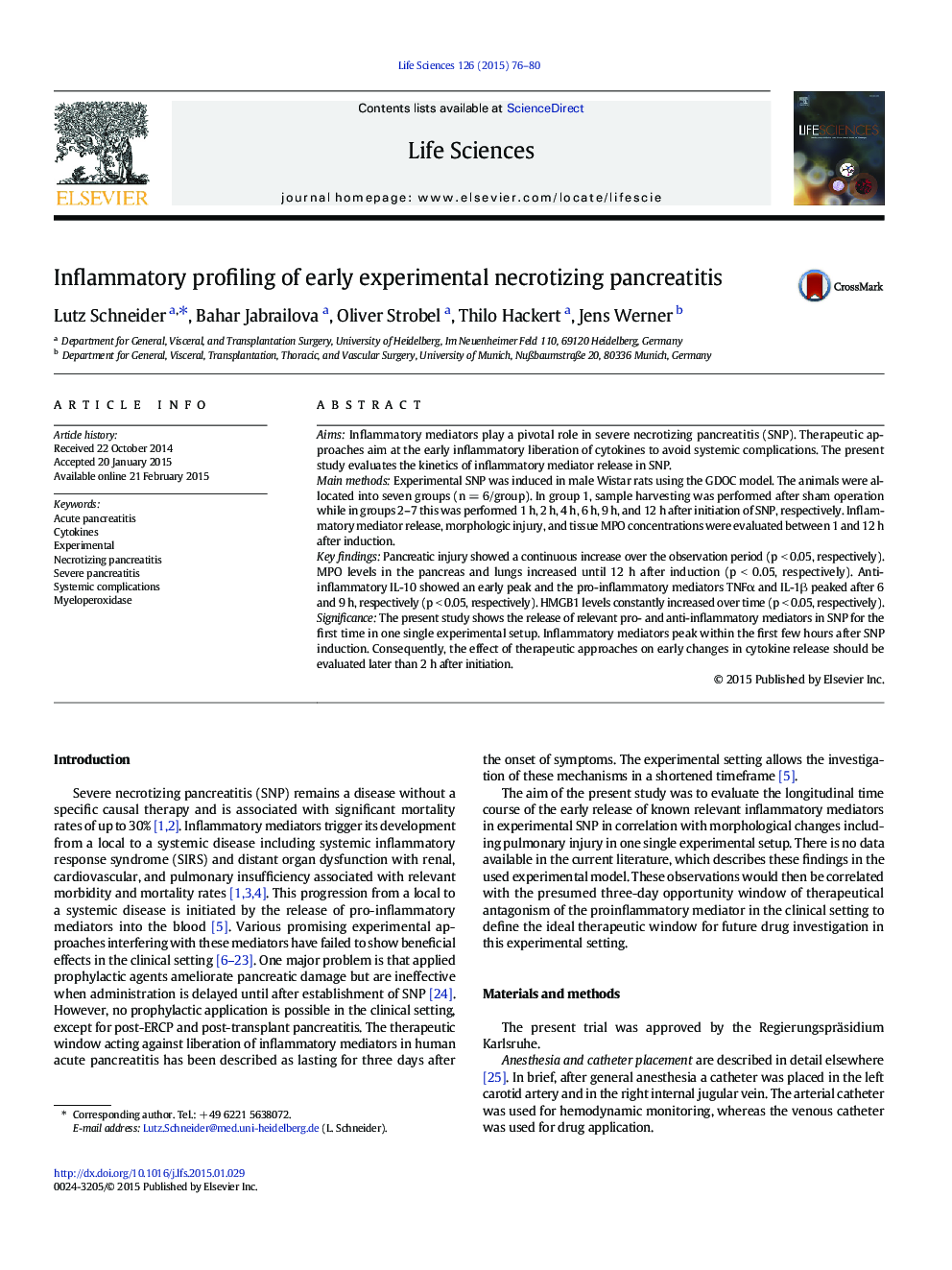| Article ID | Journal | Published Year | Pages | File Type |
|---|---|---|---|---|
| 2550963 | Life Sciences | 2015 | 5 Pages |
AimsInflammatory mediators play a pivotal role in severe necrotizing pancreatitis (SNP). Therapeutic approaches aim at the early inflammatory liberation of cytokines to avoid systemic complications. The present study evaluates the kinetics of inflammatory mediator release in SNP.Main methodsExperimental SNP was induced in male Wistar rats using the GDOC model. The animals were allocated into seven groups (n = 6/group). In group 1, sample harvesting was performed after sham operation while in groups 2–7 this was performed 1 h, 2 h, 4 h, 6 h, 9 h, and 12 h after initiation of SNP, respectively. Inflammatory mediator release, morphologic injury, and tissue MPO concentrations were evaluated between 1 and 12 h after induction.Key findingsPancreatic injury showed a continuous increase over the observation period (p < 0.05, respectively). MPO levels in the pancreas and lungs increased until 12 h after induction (p < 0.05, respectively). Anti-inflammatory IL-10 showed an early peak and the pro-inflammatory mediators TNFα and IL-1β peaked after 6 and 9 h, respectively (p < 0.05, respectively). HMGB1 levels constantly increased over time (p < 0.05, respectively).SignificanceThe present study shows the release of relevant pro- and anti-inflammatory mediators in SNP for the first time in one single experimental setup. Inflammatory mediators peak within the first few hours after SNP induction. Consequently, the effect of therapeutic approaches on early changes in cytokine release should be evaluated later than 2 h after initiation.
